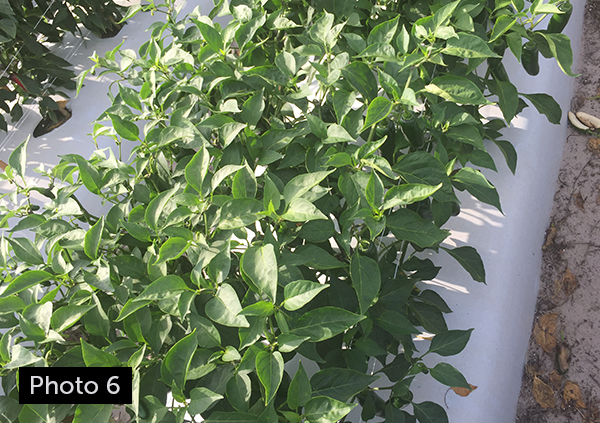In this first installment of Huma Gro® Stories From the Field, we feature 16 short stories from Florida and Georgia of growers’ use of 12 different Huma Gro® products on a variety of crops. The stories describe everything from increased yields to reduced nematodes, to recovery from frost damage to reduced effects from citrus greening. We love to find Huma Gro® solutions for every grower problem.
Sample Story:
Vitol®, Breakout®, Calcium, Super Phos® Save Jalapeño Peppers in Central Florida

These photos represent 34 acres of jalapeño peppers in Central Florida. Photo 5 shows peppers 10–14 days after transplant. The grower was discouraged and thought about terminating the crop, convinced that it could not be saved due to use of 2-year plastic and planting back-to-back peppers. Huma Gro® Representative Jason Garcia suggested an alternative. Photo 6 shows the same plants 14–21 days after initial application of Jason’s recommended Huma Gro® program. The initial program called for application of 2 qt/acre of Super Phos® and 1 qt/acre of Breakout® through the drip irrigation, with 2 qt/acre of Vitol® and 1 qt/acre of Breakout® foliar-applied. This was followed by 1 pt/ac each, every 7–10 days, of foliar-applied Vitol®, Breakout®, and Calcium. At the end of the season the grower had averaged over 1,800 boxes per acre (an 80% increase over prior years), and he said it was the best jalapeño crop he’d ever had.
Click here to view/download the complete 16 stories of Huma Gro® Stories From the Field—SE United States, No. 1.
Related Posts

Huma Gro® Stories From the Field—SE United States, No.1
In this first installment of Huma Gro® Stories From the Field, we feature 16 short stories from Florida and Georgia of growers’ use of 12 different Huma Gro® products on a variety of crops. The stories describe everything from increased yields to reduced nematodes, to recovery from frost damage to reduced effects from citrus greening.

The Huma Gro Farmer Podcast: Episode 6—Biostimulants Regulation – Blog

Huma Gro Article on Micronutrients in CropLife Magazine
CropLife Magazine currently features an article written by Huma Gro staff, “Micronutrients Are the Key To Better Yields.” The authors provide an overview of micronutrients and their relationship to the soil, common deficiencies, application methods, and the importance of following the 4Rs of Nutrient Stewardship. The article concludes by discussing the importance of developing a


